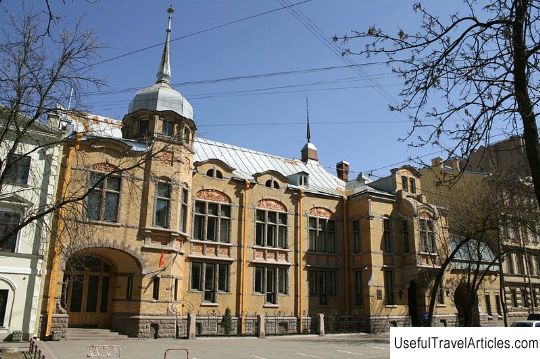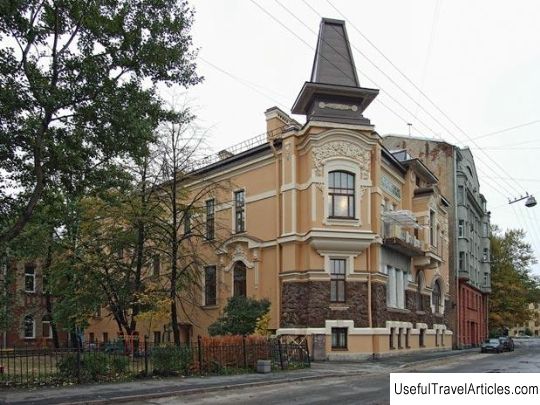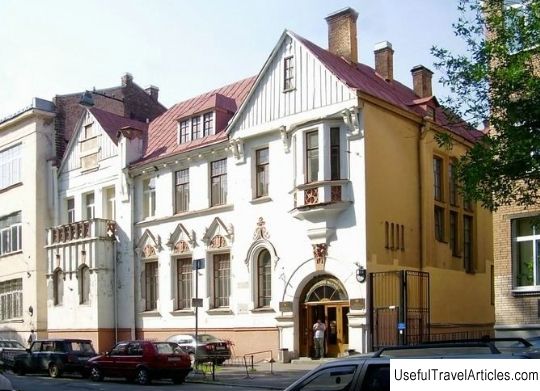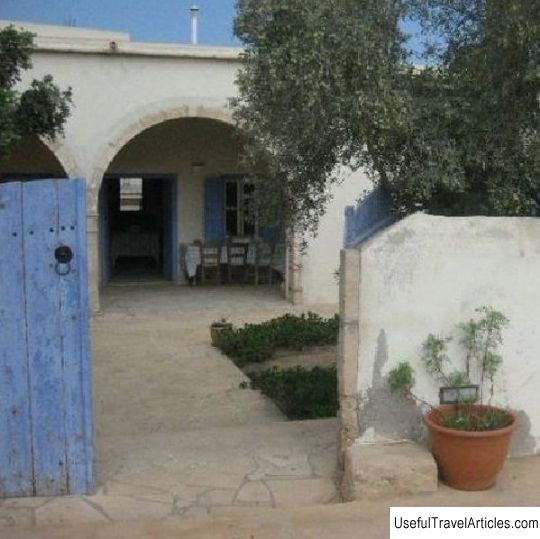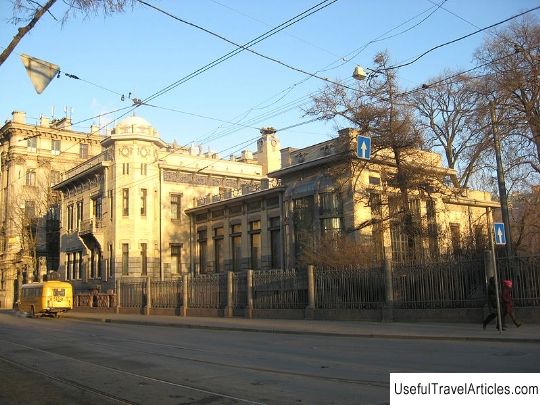Chaev's mansion description and photos - Russia - Saint Petersburg: Saint Petersburg
Rating: 9,8/10 (7905 votes) 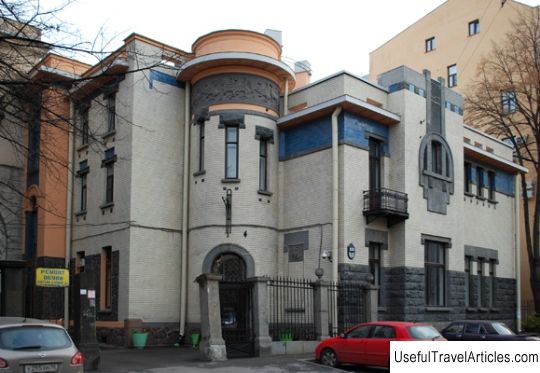
Chaev's mansion description and photos - Russia - St. Petersburg: St. Petersburg. Detailed information about the attraction. Description, photos and a map showing the nearest significant objects. Photo and descriptionA unique, and so strikingly different from other buildings, the appearance of the mansion, which previously belonged to the engineer of communications, who built the Trans-Siberian Railway, S.N. Chaev. The building was designed by a military engineer and architect, critic and theorist Vladimir Apyshkov. This was his first serious job. The work of von Gauguin A.I. had a great influence on the project, it can be traced both in the dynamic layout of the building, and in the clarity of the geometry of the outer volumes. The presence of a winter garden with a glass roof adds similarities. V.P. Apyshkov used similar materials for decoration as von Gauguin: light-colored bricks, granite blocks, tiles for friezes in bluish tones. But although V.P. Apyshkov and followed the principles that von Gauguin used, however, at the same time he developed a completely different, his own, space-planning structure. Distinctive features of this structure were: rational organization of the internal space; bold articulation of volumes; compositional movements tend to the central part of the building; objects are linked by a diagonal axis; the axis is their resultant. According to the basic concepts of Apyshkov's structure, the hall with high ceilings is a vertical rod on which the layout of all floors of the building is strung. It is a kind of spatial core, because of this, the illusion of solidity of all volumetric forms of the building is created. One form continues the other. The architectural work created by Apyshkov was attributed to the heights of Russian Art Nouveau. Many techniques and principles were anticipated by him, which became characteristic in the twenties of the twentieth century, avant-garde architecture. One of the new architectural solutions found by Apyshkov was the use of a dynamic diagonal axis, with the help of which he connected several increasing volumes of a cylindrical shape. The increase in these cylinders occurs sequentially. A narrow spiral staircase and vestibule were placed by the architect in the outer cylinder, the first in a row. The inner cylinder is a room consisting of three tiers, the main function of which is to provide communication between rooms belonging to different zones and groups of the house. Apyshkov was prompted to use the central round hall by the desire of the future owner of the house to avoid darkness in the corridors. The first floor of the hall was reserved for the reception area, the ring-shaped balcony was intended for an art gallery. On the third floor, a dining room was placed for service personnel. Natural lighting was provided through a skylight located in the center. The light fell into the lower rooms through the glass floor. The forms of the rear facade of the mansion have a clear composition. If you look from the street to the winter garden, you can see a transparent cylindrical shape that occupies a semicircular angular volume and harmoniously correlates with the straight lines of the building. The interior decoration of the premises combines the features of two directions: classical and modern. The Venetian Secession (stucco molding on floral themes, wreaths with women's masks) can be traced in the decor. The risalit of the main facade was first decorated with a female figure, then it was dismantled. The new design style proposed by Apyshkov allowed for a mixture of motives inherent in different styles. The choice of style was influenced by the furniture available to the owner of the house. At different times, the appearance of the building was subjected to changes that were made at the request of the changing owners. Sometimes these changes introduced disharmony to the overall appearance of the building. For example, in 1914 an extension was made to the rear facade, the original composition was broken. Already in our time, some of the windows were bricked up. The building currently houses a dental clinic.      We also recommend reading Monument to a bunny description and photo - Russia - St. Petersburg: St. Petersburg Topic: Chaev's mansion description and photos - Russia - Saint Petersburg: Saint Petersburg. |
